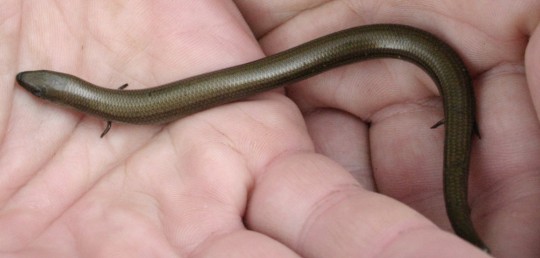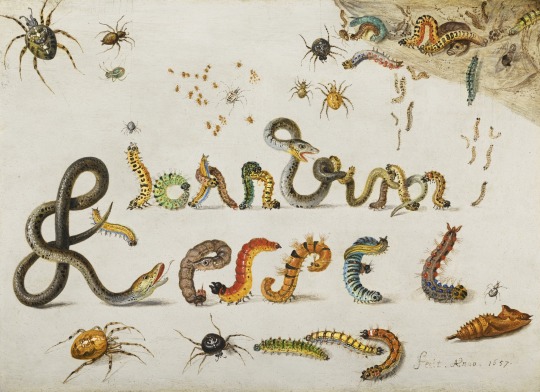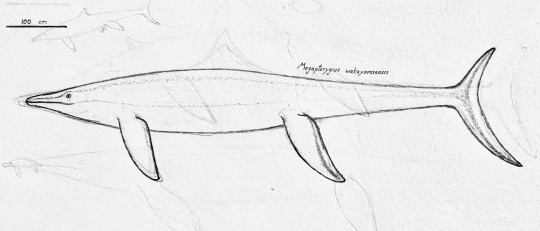#SquaMates
Text


*beep beep* Yupp,as Suspected… “Lizartd.”
#silly#funny#196#rule#r/196#sillyposting#ruleposting#shitpost#shitposting#animalposting#animal memes#zoology memes#zoology#herpetology#lizard#chameleon#namaqua chameleon#squamates#reptiles#biology memes#my posts
789 notes
·
View notes
Text

Italian Three-Toed Skink (Chalcides chalcides)
Family: Skink Family (Scincidae)
IUCN Conservation Status: Least Concern
Like several other species of lizard, the Italian Three-Toed Skink has adapted to move through areas covered with dense vegetation by developing an elongated, flexible, snake-like body with highly regressed limbs, although unlike many other "snake-like lizards" members of this species still possess four tiny limbs, each ending in a stumpy three-toed foot. Said limbs are far too small to support the skink's weight and serve no role in movement (which is achieved through an elegant snake-like slithering motion,) which has led many to question what purpose, if any, they serve; it is generally assumed that the limbs are vestigial and that, given sufficient time, the descendants of modern Italian Three-Toed Skinks will lose them entirely, although some herpetologists and evolutionary biologists have suggested that the continued existence of this species' limbs suggests that they must serve some function, such as being moved as part of a courtship display or allowing mating individuals to hold onto one another (although as these behaviours have never been observed these suggestions are entirely speculative.) Found in damp, well-vegetated areas across most of mainland Italy as well as Tunisia, Algeria, Libya and the nearby island of Sardinia, members of this species are diurnal, feed mainly on insects and breed during the spring; like most skinks, females of this species give birth to live young, with newborns, which resemble miniature adults, being independent immediately after birth.
--------------------------------------------------------------------------
Image Source: https://www.inaturalist.org/taxa/53646-Chalcides-chalcides
#Italian Three-Toed Skink#skink#skinks#animal#animals#zoology#biology#herpetology#herpetofauna#wildlife#european wildlife#african wildlife#reptile#reptiles#lizard#lizards#squamata#squamates
878 notes
·
View notes
Text

Exciting news: my podcast is back!
In 2018, Gabriel Ugueto (well known palaeo-artist and former herpetologist), Ethan Kocak (New York Times best-selling cartoonist and herpetoculturist), and I (a talkative herpetologist) decided that the world needed a herpetology-focused podcast that featured the latest big news in herpetological research, and took some deep, jargon-heavy dives into the nitty gritty of it all. So we started the SquaMates podcast.
We had a great deal of fun making the podcast, but in the wake of the panini, we struggled to find time for the show and coordinate recording schedules, and the show had to go on hiatus.
But now, after nearly two and a half years, we're back, and I venture to say we're better than ever! Hiral Naik, a snake ecologist from South Africa, has now joined us as a permanent co-host. Moreover, we're now recording and releasing the show in video on YouTube, as well as over normal podcast streams!
Episode 22 will drop on YouTube and podcast apps on Monday 12 February at 10:00 EST, 16:00 CET!
You can listen to the backlog at squamatespod.com, or on apple podcasts and other podcast apps.
I hope you enjoy the show!
354 notes
·
View notes
Text
Uncharismatic Fact of the Day
When handling members of the family Anguinae, it's important to be extremely careful! These reptiles are known as glass lizards, due to the fact that their tails will 'shatter' into many pieces when they feel threatened.

(Image: A western slender glass lizard (Ophisaurus attenuatus) by Daniel D. Fogell)
If you send me proof that you’ve made a donation to UNRWA or another fund benefiting Palestinians– including esim donations and verified gofundmes– I’ll make art of any animal of your choosing.
149 notes
·
View notes
Text
Mosasaurus!
Late Cretaceous. 83-66MYA.
They were one of the first mesozoic animals to be given a name, beating the first named dinosaur Megalosaurus by 60 years! (1764 for the first named Mosasaurus, 1824 for Megalosaurus, the first named Dinosaur)
#video#art#my art#paleontology#paleoart#science#not a dinosaur#also not a plesiosaur#mosasaurus#squamata#squamates#lizard#reptile#marine reptile
96 notes
·
View notes
Text
Soulmates are out, squamates are in.

16 notes
·
View notes
Text

Beautiful Queensnake
8 notes
·
View notes
Text
We don't have an exact birthdate for Flemish artist Jan van Kessel the Elder, but he was baptised #OTD (5 Apr 1626 - d. 17 April 1679) so here are three versions of his caterpillars and snakes signature (+some bonus spiders for #BeKindToSpidersWeek):

Jan van Kessel the Elder (Flemish, 1626–1679)
"Garden and house spiders with grass snakes and caterpillars contorted and entwined to spell the artist's name"
1657
oil painting on copper
H 15 cm (5.9 in) x W 20 cm (7.8 in)
Sothebys

Jan van Kessel the Elder (Flemish, 1626–1679)
The Four Continents: The Continent of Europe [detail of the signature panel]
c. 1660s
oil painting on copper
H 48.4 cm (19 in) x W 67.1 cm (26.4 in)
Alte Pinakothek

Jan van Kessel the Elder (Flemish, 1626–1679)
"Seventeen panels depicting snakes, lizards, flowers, caterpillars, beetles, butterflies and other insects" [detail including the signature panel]
1658
oil painting on copper,
39 x 56 cm (15 x 22 in) and 14 by 19 cm (5.5 x 7.5 in)
Oak Spring Garden Foundation, Upperville, call no. NW-UL-NW
You can read more about this creative signature, and see his son Ferdinand's version too, here:
#Jan van Kessel I#Jan van Kessel the Elder#Flemish art#European art#17th century art#oil painting#copper painting#caterpillars#snakes#spiders#insects#arachnids#arthropods#squamates#reptiles#signature#Sothebys#Alte Pinakothek#Oak Spring Garden Foundation#The Public Domain Review#animal holiday#Be Kind to Spiders Week#Please No Squish#animals in art
23 notes
·
View notes
Text


Two sketches of some recently described squamates: the long-finned mosasaur Megapterygius from Late Campanian/Early Maastrichtian Japan, and the little stem-gecko Helioscopos from Late Jurassic Utah.
4 notes
·
View notes
Text
It's snake season alright.
The other day, I was watering and repositioning some pot plants in the garden when a Green Whip snake popped in to drink from the bromliads I filled.
And then today, I almost smushed Rustle the resident Carpet Python! ((( ;゚Д゚))) .

We were worried I may have caused internal damage, but a check over from a local snake wrangler confirmed they were okay.


We released them just a few meters away since it's a resident, but the wrangler noted that they were unusually defensive and hostile, even engorging their throat for a bit, which is apparently unusual. He thinks it may either be a male trying to get to a female or a mother who is oddly away from its nest.
This heatwave (thanks climate change) means that snakes are breeding two months earlier than usual so keep your eyes out folks!
#Coastal Carpet Python#Morelia spilota mcdowelli#Python#Snakes#squamates#Reptiles#Australia#Climate Change#Summer in Spring#Snake season#Rustle the Carpet Python
5 notes
·
View notes
Text

Louisiana Pine Snake (Pituophis ruthveni)
Family: Colubrid Snake Family (Colubridae)
IUCN Conservation Status: Endangered
Among North America's rarest snakes, the Louisiana Pine Snake's small population size is the result of its highly specific habitat requirements and the resulting sensitivity to human-driven habitat changes that comes with them; members of this species feed primarily on Baird's Pocket Gophers (a specific species of burrowing rodent,) and almost always live in abandoned Baird's Pocket Gopher burrows (often after having eaten the burrows creator,) and as such in areas where Baird's Pocket Gophers are not present Lousiana Pine Snakes cannot survive. Native to western Lousiana and eastern Texas, members of this species do best in pine forests (particularly those dominated by a specific species of pine, Pinus palustris, forests of which are noted to generally support high levels of biodiversity as a result of the loose canopies they form which allow many smaller species of plants to coexist with them,) and spend most of their lives underground, rarely travelling far from their stolen burrows. They emerge from their burrows mainly during the mid-day to hunt (targeting rabbits, frogs and other rodents when Baird's Pocket Gophers are scarce,) but otherwise remain concealed underground in order to avoid predation and unusually high or low temperatures; during the winter, when the weather becomes colder and prey becomes scarcer, they travel deeper into a Baird's Pocket Gopher burrow and hibernate until the early spring.
--------------------------------------------------------------------------
Image Source: https://www.inaturalist.org/taxa/29041-Pituophis-ruthveni
#Louisiana pine snake#snake#snakes#reptile#reptiles#zoology#biology#herpetology#animal#animals#herpetofauna#squamata#squamate#squamates#wildlife#North American wildlife#North American snakes
182 notes
·
View notes
Note
From what i can tell you mostly deal with frogs/smaller amphibians and reptiles of that sort, how do you feel about snakes? Do you like finding them or is it more meh
Additionally: do you have a favourite snake species you like to find/interact with in the wild?
Snakes are a fascinating group of lizards. I work quite a bit with snakes, though not as much as with other reptiles or amphibians. I am particularly fond of tree snakes, like the Malagasy genera Lycodryas, Parastenophis, and Phisalixella. Here, for instance, is the highly fashionable Parastenophis betsileanus.

Most of my research on snakes so far concerns blind snakes and their relationships. These are a little less exciting to look at in life, but are still quite remarkable creatures, and their tiny skulls are especially cool.


So weird.
You can read a bit about some of my work on blindsnakes here.
300 notes
·
View notes
Text
恭喜发财! It's the year of the dragon, which is great news for the Chinese water dragon. Adults can be quite large, reaching up to 90 cm (3 feet) in length, and as their name implies they are adept swimmers and can spend up to 25 minutes underwater!

(Image: A Chinese water dragon (Physignathus cocincinus) by Paul McKenzie via iNaturalist)
If you like what I do, consider leaving a tip or buying me a kofi!
#chinese water dragon#Squamata#Agamidae#dragon lizards#lizards#squamates#reptiles#uncharismatic facts
204 notes
·
View notes
Text
Hainosaurus boubker. To be honest I find that my mosasaur reconstructions are some of my more weaker ones.

With Hatsune Miku for scale:

#hainosaurus#tylosaurus(?)#tylosaurinae#mosasauridae#marine reptile#squamata#squamates#paleoart#digital doodle
15 notes
·
View notes
Note
What would be your opinion on so-called pythonomorpha? I've always figured the morphological and implicit genetic evidence was overwhelming when compared to the "burrowing lizard" hypothesis of snake evolution when it came to jaw anatomy and convergent evolution, but I understand it's a fairly divided issue and am wary of dogma as a paleontology student. Wanted your opinion on the cladistics of it, since every paper I read seems to contradict one another
The cladistics are such a mess I am not touching it with a ten foot poll. I do think toxicofera is definitely a thing. But between mosasaurs and the early fossil burrowing snakes, it’s a toss up as to their ancestral ecology at this point
9 notes
·
View notes
Photo

[ID: A drawing of the head, neck, and part of the torso for an arboreal snake. The snake has a large head on a thin body with massive round eyes.
The drawing is black line art with transparent greys and whites used for shading and highlights. The underside of the snake is shadows while the upper surface and eyes are highlighted. /End ID]
A noodle
A bug eyed arboreal snake.
@kariachi
7 notes
·
View notes